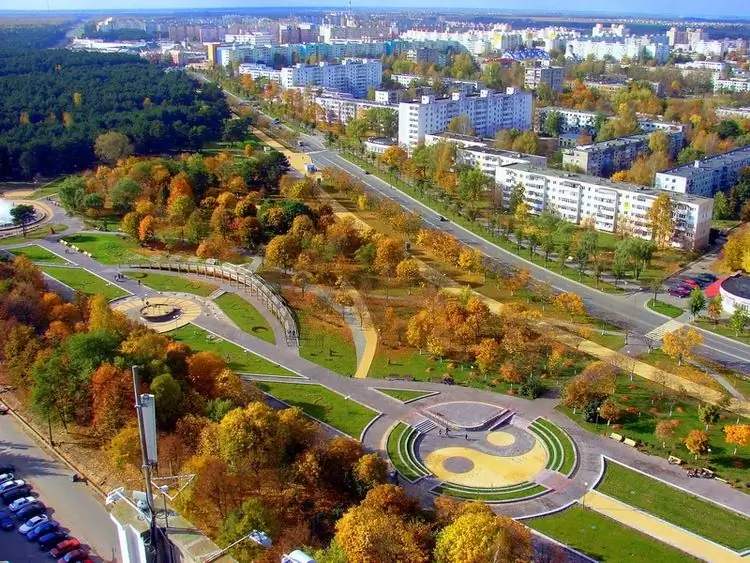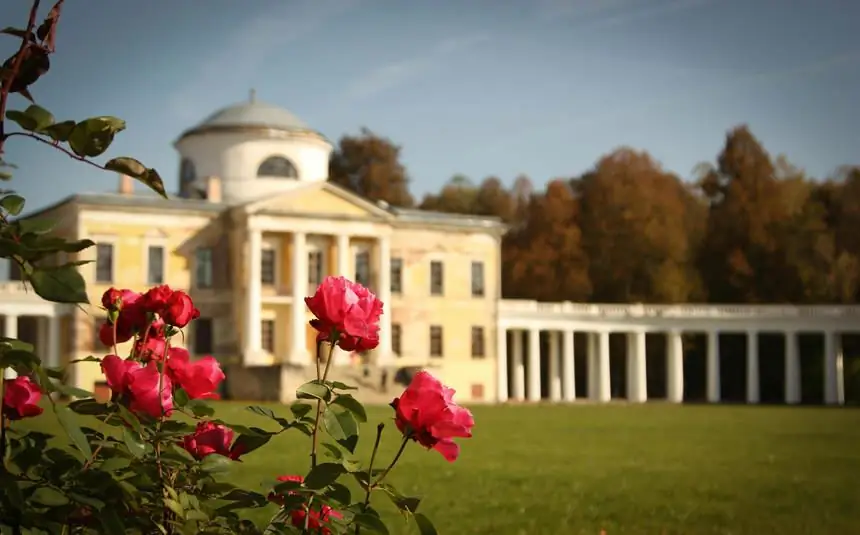- Author Harold Hamphrey [email protected].
- Public 2023-12-17 10:06.
- Last modified 2025-01-24 11:10.
Frederiksborg Castle is the largest Renaissance palace in Northern Europe. The castle complex is located on three islands of a small lake with sprawling baroque and landscaped gardens on the mainland. It is also referred to in documents as Danish or Scandinavian. This huge building is one of the most impressive in Denmark, the Renaissance palace stands proudly above the unusual moat-lake Slotse.

Guests have free access to stunning central courtyards and a large well-maintained park with baroque gardens. A ticket is required to visit an unusual place. It will take you about three hours to see over eighty rooms furnished with beautiful furniture, tapestries, endless portraits and gorgeous gilded decor. There are informative maps along with free audio guides in nine languages, making the visit even more convenient. In the article, we will consider such interesting questions as the history of the fortress, tips on how to get to Frederiksborg Castle. We will also discuss otherimportant details.
History of Frederiksborg Castle in Denmark
Like many monumental buildings in Copenhagen, Frederiksborg Palace was the property of King Christian IV (C4 on building facades). The royal person had a manor, where the king was born in 1577. It was later replaced by this massive red brick complex. This happened in the first two decades of the 17th century. The oldest part of the castle dates back to the reign of Frederick II, after whom it is named. His son Christian IV was born here, and most of the current building was built by him at the beginning of the 17th century. Photos of Frederiksborg Castle in Denmark are fascinating. This is a majestic complex both inside and out.

In the 1850s, King Frederick VII approved Frederiksborg Castle again as a residence, but a fire broke out in the newly installed fireplace, causing the palace to be destroyed in 1859. The castle was rebuilt, and since 1878 it has been used as the Danish National Historical Museum.
The construction of the current palace began in 1599 and lasted 22 years. At that time, Christian IV was king. He demolished most of the old castle and built a new version. It has survived to our times, delighting the eyes of visitors.
Especially magnificent is the part of the castle called Slotskirken, where Danish monarchs were crowned between 1671 and 1840. It retained the original interior planned by Christian IV and survived a fire in 1859 that destroyed much of the original castle.
Rich interior

It is delightfully decorated, decorated with fine gold ornaments, cherub images, altarpieces, typefaces and pulpits covered with silver ornaments, and houses a priceless 1610 Compenius organ (played on Thursdays for half an hour at 13:30).
Other rooms in the castle were restored to their original appearance in the 19th century, especially the ornate Riddershalen, a huge ballroom with a minstrel gallery and colorful ceiling carvings.
On the first and second floors is the Museum of National History, a chronologically arranged portrait gallery of kings, nobles and famous elders, interspersed with unusual pieces of furniture.
To the north of Frederiksborg Castle lies the vast Slotshaven Park. Baroque exterior garden (open from 10 am to sunset) with beautiful terraces and stunningly decorated plants. Even nature was forced to submit to the will of the king. Frederiksborg Castle was often used as a royal residence in the 17th century, but then was empty, except for the crowning of the Danish kings between 1671 and 1840.
The most beautiful part of the palace is the old chapel. It is still in use and is one of the most beautiful Protestant churches. This is a very popular place to get married.
Visitors enter the castle using the many gates and courtyards with drawbridges that offer views of the various sights of the palace. Near the main entrance is a copy of the fountain of Neptune by Adrian de Vries(1617). The original was taken by the Swedes as a war trophy in 1659. He is currently at Drottningholm Palace outside Stockholm.
Danish Museum of National History
Frederiksborg Castle in Copenhagen has housed a museum of national history since 1878, founded by brewer Jacobsen and Carlsberg. The museum is an independent branch of the Carlsberg Foundation.

The museum presents the history of Denmark with a rich collection of portraits, historical paintings, antique furniture and decorative art. As you travel through the museum, you'll see the people and events that helped shape Danish history from the Middle Ages to the 21st century.
The historical interior of the museum and the magnificent halls of the castle demonstrate the change of styles and eras, as well as the social conditions of the past. The collection of portraits is the largest and most important in Denmark, and new works are constantly being added. It can be described as an arts and crafts museum as it does not explain Danish history through the lens of wars, expansions and national catastrophes.
Chapels
The highlight of Frederiksborg Castle is the magnificent baroque chapel from 1617, which largely escaped the fire of 1859.
Visitors look down on the church from the top floor, providing a panoramic view of the original baroque and rococo decorations and paintings. There are several other important elements in the chapel.
Wooden 1000-pipe organ built in 1610, which is stillremains original, without structural changes. His bellows are still operated by hand. The musical instrument can be heard on Thursdays at 13:30 during a short concert.

The pulpit in gold, silver and ebony is the original made by Jacob Maures in 1605. Since 1693 the church has served as the Ridderkirke (Knights' Chapel), the two most noble Danish orders: the Order of the Elephant and the Order of the Dannebrog. Member coats of arms are on the walls of the gallery and include collections of portraits of other prominent figures such as Nelson Mandela, World War II Allied leaders (Churchill, Montgomery, Eisenhower, De Gaulle), the current President of Germany, and senior members of the royal family from many countries.
The absolute monarchs were anointed in the majestic castle chapel. Nowadays, ordinary citizens also have access to services and listen to concerts in a historic interior. From the upper floor of the gallery, where coats of arms for the Knights of the Order of the Elephant and large crosses of the Order of the Dannebrog are regularly added, a breathtaking view of the interior of the chapel opens up.
Havehuset Cafe

Café Havehuset is an idyllic castle café serving food and drink both inside and out. In the outdoor patio, you can see a large model of the garden, as well as an exhibition on the history of the garden. Public bathrooms are also located at Havehuset Cafe.
Children's Museum

The Museum of National History hasa whole section specially for young visitors called "Danish story for children" in the old wine cellar of the castle. Here you can get acquainted with the exhibition for children "Christian the Fourth - a child and a king", which tells the story of this famous ruler of Denmark, with an emphasis on his childhood. Here, the youngest history buffs can write with ink pens, look at color drawings or dress up in beautiful children's costumes specially made for the Museum of National History. The Children's Museum is open from 10.00 to 16.30 on weekends and Danish school holidays from Easter to mid-October.
Castle Garden

One of the main features of Frederiksborg Castle is that it has several gardens in one. The garden that surrounds the castle is a huge part of the castle's history and is also connected to another renaissance palace in Hillerød. It is a great recreational area for city dwellers and numerous visitors from all over the world. Here, enthusiasts can see the intertwining of different styles: baroque meets romance and also contrasts with the natural landscape.
Baroque garden
The baroque garden, designed by JC Krieger in the 1700s and recreated in 1993-1996, is a superb example of landscaping and horticulture. The garden is built of four terraces that descend down to the castle lake.

The garden is characterized by numerous straight lines, well-groomed clearings and molded trees. All thisshows how perfect landscape design was in the 1700s. Along the central axis, you can see cascading fountains that reach the very main entrance to the castle.
On the lower floor you will find four royal monograms: Frederick IV, who founded the baroque garden, Christian VI and Frederick V, and finally Queen Margrethe II, who reopened the recreated baroque garden in 1996.
History of Baroque gardens and mobile guide
If you want to know more about the history of the baroque garden, you can use the telephone directory located there. The park has six signs where you can find and hear about the history of the gardens, their design, form, creation and rare plants. Use the phone to call the numbers on the signs.
Garden Tours
You can book a tour of the baroque garden with a trained guide in Danish, English, German, Spanish or French. The tour lasts 1 hour 15 minutes. Group tours can be booked by email. Rest assured, the photos of Frederiksborg Castle during the tour will be incredible.
Tips and practical information
The Baroque Garden is open all year round from 10 am to sunset, that is, until 9 pm. The remaining gardens of the castle are always open to the public. Entrance to the garden is free. The cascades and the fountain are open from May 1 until the end of the autumn holidays, until October 17. They operate every day from 10:00 to 21:00. During the ringing of castle bells, hydraulic structures are closed for 15 minutes. Entrance is not allowed for people with animals.
How to get to Frederiksborg Castle in Denmark
The palace is located 35 kilometers from Copenhagen. The easiest way is to take the train from the central station in Copenhagen to the city of Hillerod, and then walk to the palace. Traveling by train takes 42 minutes and walking another 20-25 minutes (1.5 km).
One more tip on how to get to Frederiksborg Castle in Denmark is to join the GRAND DAY TRIP AROUND COPENHAGEN tour. This tour includes a full trip to Frederiksborg Palace as well as other major historical sites in the Copenhagen area. This is the only way to see everything in one day.






